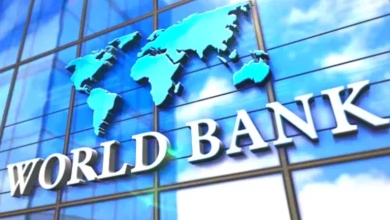Are We Headed For A Recession? A Cause For Concern

- A toxic cocktail of factors slowing economic growth
- This concerning trend is mirroring itself right now
- Recessions have a domino effect, impacting businesses of all sizes
The murmurs of a looming global recession have grown louder in recent months. A toxic cocktail of factors – slowing economic growth, rising inflation, and tightening financial conditions – has sparked fears of a downturn.
Looking back at past recessions, a worrying pattern emerges. Every global recession since 1970 was preceded by a significant slowdown in global growth the year before.
This concerning trend is mirroring itself right now. Additionally, past downturns often coincided with sharp slowdowns or even full-blown recessions in major economies, and this too seems to be unfolding.
The current economic climate is a double whammy – high inflation coupled with low growth. This, combined with high debt levels and a fragmented global landscape, is creating a disincentive for businesses to invest, which is crucial for economic recovery.
Recessions have a domino effect, impacting businesses of all sizes. Sales and profits typically plummet, forcing companies to make tough decisions. Layoffs become a harsh reality, and cuts are made in capital spending, marketing, and research. Access to credit becomes tighter, collections slow down, and bankruptcies can rise.
The financial sector isn’t immune either. Slower economic growth and higher interest rates can lead to a decline in the quality of assets held by banks. This translates to higher loan losses and reduced lending, further hindering economic activity. Geopolitical tensions add another layer of complexity, creating a volatile environment for financial institutions.
Companies too face a multitude of challenges. Rising borrowing costs, increasing input prices, and potential wage pressures can squeeze their profitability. This can stifle investment and lead to job cuts. Firms with a high proportion of floating-rate debt are particularly vulnerable to rising interest rates.
So, what can be done? Policymakers face a delicate balancing act. They need to implement a combination of measures to stimulate both demand and supply.
Central banks need to prioritize price stability through consistent monetary policy actions. On the fiscal side, governments need to focus on long-term debt sustainability while providing targeted support to vulnerable populations. Additionally, they should be prepared to mitigate potential spillover effects from a global withdrawal of growth-stimulating policies.
Supply-side measures are also crucial. Policies are needed to address constraints in labor markets, energy markets, and trade networks to facilitate economic growth.
Strengthening financial stability is another key area of focus. Non-bank financial institutions need to ensure robust risk management practices. Regulatory actions should aim to maintain adequate capital and liquidity buffers for banks and non-bank financial intermediaries. Supervisory bodies play a vital role in mitigating risks. They need to develop and enforce clear rules outlining acceptable behavior for financial institutions, actively monitor emerging risks, and take timely action against unsafe practices. This necessitates a robust institutional framework with sufficient authority for swift action.
The situation demands a proactive approach. By acknowledging these potential risks and implementing necessary measures, policymakers and financial institutions can work together to mitigate the impact of a potential recession and ensure a more resilient financial system.






